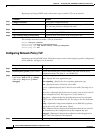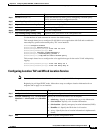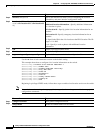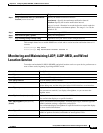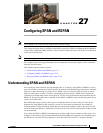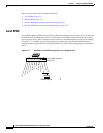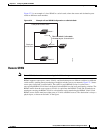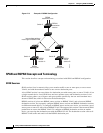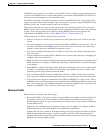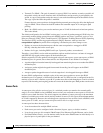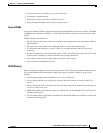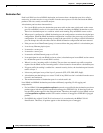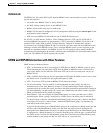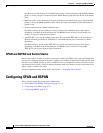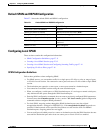
27-4
Catalyst 2960 and 2960-S Switch Software Configuration Guide
OL-8603-09
Chapter 27 Configuring SPAN and RSPAN
Understanding SPAN and RSPAN
Figure 27-3 Example of RSPAN Configuration
SPAN and RSPAN Concepts and Terminology
This section describes concepts and terminology associated with SPAN and RSPAN configuration.
SPAN Sessions
SPAN sessions (local or remote) allow you to monitor traffic on one or more ports, or one or more
VLANs, and send the monitored traffic to one or more destination ports.
A local SPAN session is an association of a destination port with source ports or source VLANs, all on
a single network device. Local SPAN does not have separate source and destination sessions. Local
SPAN sessions gather a set of ingress and egress packets specified by the user and form them into a
stream of SPAN data, which is directed to the destination port.
RSPAN consists of at least one RSPAN source session, an RSPAN VLAN, and at least one RSPAN
destination session. You separately configure RSPAN source sessions and RSPAN destination sessions
on different network devices. To configure an RSPAN source session on a device, you associate a set of
source ports or source VLANs with an RSPAN VLAN. The output of this session is the stream of SPAN
packets that are sent to the RSPAN VLAN. To configure an RSPAN destination session on another
device, you associate the destination port with the RSPAN VLAN. The destination session collects all
RSPAN VLAN traffic and sends it out the RSPAN destination port.
RSPAN
VLAN
RSPAN
source ports
RSPAN
source ports
RSPAN
destination ports
RSPAN
source
session B
Intermediate switches
must support RSPAN VLAN
Switch B
RSPAN
destination
session
Switch C
RSPAN
source
session A
Switch A
101366



